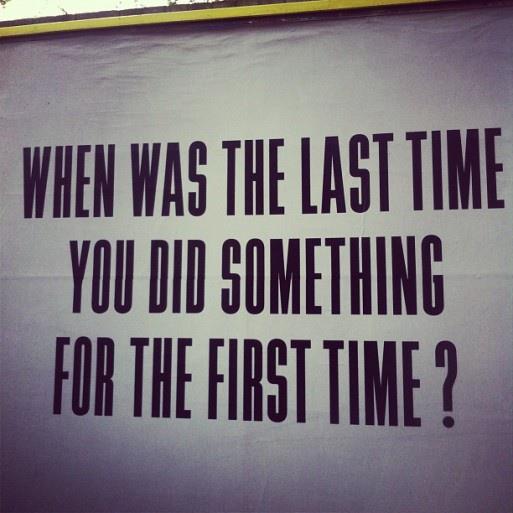How to Use Content Themes on Your Website
Creating your blog content ideas around content themes is a great way to inspire your creativity and build a long list of content ideas in your niche. If this is your first time hearing about the use of content themes in content creation, you’re in luck. In this article, we’re going to look at this blog planning and organization technique in detail, discuss how to identify content themes that will work for your blog, and offer actionable advice for planning your content ideas in the future.
What are Content Themes?
Content themes, or topic clusters, are broad topics that fit within the niche of your website, which can then be broken down into multiple blog posts or pieces of content. They can be used to help inspire content ideas, boost website traffic through SEO, maintain focus on your brand messaging, and improve the user experience on your website by making it easier to navigate to other content that they may find interesting or useful.
To break it down into more basic terms, you will choose a single broad topic that you believe will interest your desired audience and create several pieces of content that all fall under this umbrella. Each piece of content will focus on a specific piece of the larger topic while internal linking ties them all together.
When one piece of content is seen as high-quality and high-performing by Google, it will get a boost in the way that it performs in search results. However, by creating a cluster, Google can then recognize that the other pieces of content are about the same topic that you are now being viewed as an authority on. It will then boost the entire cluster instead of just the original piece of content.
How Do I Find Ideas for Content Themes?
The first step with any content planning is to make sure that you have a clear understanding of your brand’s message and purpose. Everything marketing decision that you make should be focused on supporting this message.
Consider the topics that are core to your business and its values. For example, if your product is a supplement for senior dogs, make a list of broad topics that relate to senior dogs and their unique needs such as mental enrichment for senior dogs, lifestyle changes to improve a senior dog’s quality of life, and common health conditions experienced by senior dogs. You want to choose topics that are broad enough that there is room to continue producing content that fits that scope but also narrow enough to establish a clear connection between the content.
Are there broad themes that you see come up often in the comments on your blog? Have you noticed popular topics of discussion in Facebook groups or other communities where your desired audience is spending time? These topics may be a great way to attract new website visitors and encourage engagement with your content. Additionally, these are topics that can help to position you as a knowledgeable resource in your industry.
Different types of content themes include seasonal monthly content themes (holidays, seasonal activities, unique needs based on the weather), or long-term content themes that will continue to add to your editorial calendar throughout the year.
How Do I Plan My Content Ideas?
Now that you have chosen your content themes, how can you use these topics to help come up with ideas for content? Here are 5 ways that you can generate a list of blog content ideas that will fit your chosen content themes and, more importantly, support your brand message.
Keyword Research
One of the most effective ways in terms of creating a marketing plan that will help to increase website traffic and boost your organic search ranking is to use your content themes as the starting point for your keyword research. Often, our content themes are very broad keywords that would be extremely difficult to rank in on their own. However, you can then break those topics down into more specific long-tail keywords that you would like to cover and create content targeting this new list of keywords.
Not only does this allow you to target several long-tail keywords effectively, but the internal linking structure of a content cluster will support your SEO efforts and help you establish your website as a source of high-quality information in the eyes of Google (and other similar search engines).
Check Google’s ‘People Also Ask’
Google your content theme topic and check out what comes up in the ‘people also ask’ portion of the search results. These are all topics that are being searched on the platform and therefore present an opportunity to answer important questions that people have about your topic. Each time that you click on a question here, additional questions will then appear. While not every question is going to relate directly to your topic and your brand messaging, you will likely find a few that will help build on your content cluster.
Find Opportunities in Your Pillar Content
Pillar content refers to a piece of content that introduces the content theme, providing a central hub for your internal linking and carefully tying all your content in that cluster together. These posts can also be a great tool for discovering content ideas. Your pillar content should offer a broad overview of the topic without going into too much detail on any one point. As you’re writing, take note of any topics that you touch on that you believe deserve to be discussed in greater detail.
For example, if you’re creating a content theme surrounding healthy cat engagement and you briefly touch on different opportunities for engagement in your pillar content, each example you provided could be a potential blog post – cat scratch posts for cats, sensory toys for cats, food and treat puzzle toys for cats.
Consider Different Angles for a Single Topic
Each topic that you cover in a blog post can be approached from a variety of different angles. While you don’t need to cover every possible opportunity (as this could make your blog very repetitive), you could consider a couple of different angles to better cover the long-tail keywords that you would like to rank for. If you’re covering cat health topics and one idea that came to mind was how to identify the symptoms of a cat fever, you don’t have to stop there. You could write another post discussing what qualifies as a healthy cat temperature, or the potential causes of a fever in cats.
Consider a Step-by-Step Approach
This isn’t going to work for every theme, but if you are covering a topic that involves multiple stages or steps to achieve success, consider breaking each step down as its own piece of content. Not only will doing so provide you with additional content ideas, but it will also allow you to provide more detail for each step to improve the success of your audience without it turning into an extremely large post that may feel overwhelming. For example, if you are discussing dog training and want to discuss how to teach your dog to heel beside you whether he is on or off-leash, this can be a long process. Your first post could discuss the beginning stages of leash training, then you could move to more advanced loose-leash training before creating another post discussing how to effectively remove the leash from the equation.
By creating a content plan that is focused on a theme structure, you are setting your blog up for success in organic search. Additionally, it will allow you to provide your audience with a constant flow of content that relates to a topic that they are interested in, providing more value, and setting an expectation for what they can expect.
Don’t forget to go back as each post goes live and add the relevant internal links to connect everything properly!
Do you use content themes in planning your blog content? If so, how did you decide on your themes?
About the Author: Britt Kascjak, BlogPaws Director of Content & SEO, is an award-winning freelance writer whose background in digital and social media marketing spans 15+ years. She’s been a content creator in the pet industry for 9+ years with her own blogs: Shed Happens, The Kas Pack, and Lucifer the Rescue Pup where she shares her life and outdoor adventures with her 2 dogs and 3 cats. Read more…









One Comment